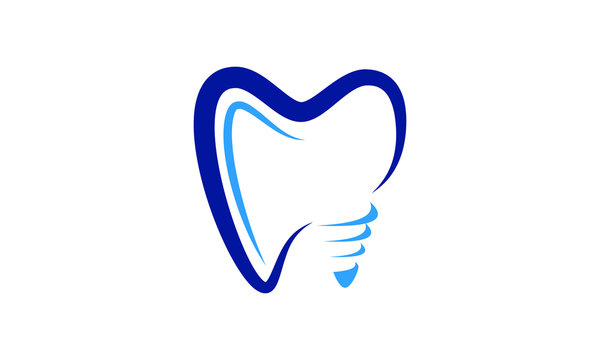A bright, white smile is often seen as a key to confidence and a sign of good oral health. Whether you’re preparing for a big event, refreshing your look, or simply interested in improving your smile, teeth whitening can be a game changer. But with so many options available, from over-the-counter products to professional treatments, it can be hard to know where to begin.
This guide will walk you through everything you need to know about teeth whitening, helping you make an informed decision that suits your goals and lifestyle.
What Causes Teeth to Stain?
Before exploring whitening options, it’s important to understand why teeth become discolored in the first place. There are two main types of stains:
1. Extrinsic Stains
These occur on the outer surface of the teeth. Common culprits include:
- Coffee, tea, and red wine
- Tobacco use (smoking or chewing)
- Dark-colored foods like berries and tomato sauces
2. Intrinsic Stains
These are found within the tooth structure and can be caused by:
- Aging (as enamel thins, the yellow dentin inside becomes more visible)
- Certain medications (like tetracycline antibiotics)
- Trauma or injury to the tooth
- Excessive fluoride exposure during childhood
Regardless of the type of stain, most teeth whitening treatments are designed to target discoloration and restore brightness.
Popular Teeth Whitening Options
There’s no one-size-fits-all solution when it comes to whitening your teeth. Depending on your needs, budget, and patience level, you can choose from a range of methods:
1. At-Home Whitening Products
These are affordable and accessible options that you can buy at a drugstore or online.
Whitening Toothpaste
- How it works: Contains mild abrasives and polishing agents that remove surface stains.
- Pros: Affordable, easy to use, and part of your daily routine.
- Cons: Results are subtle and take time to appear.
Whitening Strips
- How it works: Thin, flexible strips coated with a peroxide-based gel are applied directly to your teeth.
- Pros: Convenient, noticeable results in a few weeks.
- Cons: May cause gum irritation or tooth sensitivity.
Whitening Trays (Over-the-Counter Kits)
- How it works: Pre-filled trays with whitening gel are placed over your teeth for a set amount of time.
- Pros: Covers all teeth evenly, delivering results faster than strips.
- Cons: Generic trays may not fit perfectly, leading to uneven whitening.
2. Professional Teeth Whitening
For dramatic results, many people turn to dental professionals for whitening treatments. Here’s what you can expect:
In-Office Whitening
- How it works: A dentist applies a high-concentration whitening gel, often enhanced with a special light to accelerate the process.
- Pros: Instant results (whiter teeth in about an hour), expertly performed.
- Cons: Higher cost compared to at-home solutions.
Take-Home Kits (Dentist-Supervised)
- How it works: Customized trays are created by your dentist, along with professional-strength whitening gel for at-home use.
- Pros: Safer and more effective than over-the-counter kits; allows more control over the process.
- Cons: Takes several days or weeks to achieve desired results.
3. Natural Remedies
Some people prefer DIY or natural solutions, such as:
- Baking soda toothpaste
- Activated charcoal treatments
- Oil pulling with coconut oil
While these methods may slightly improve surface stains, they are not scientifically proven to deliver significant whitening results. They may also abrade enamel if used excessively.
Are There Any Risks to Teeth Whitening?
While teeth whitening is considered safe for most people, there are a few side effects and precautions to keep in mind:
- Tooth Sensitivity: Whitening agents can temporarily irritate the nerve in your teeth. Look for products made for sensitive teeth or consult your dentist.
- Gum Irritation: Whitening gel that comes into contact with your gums may cause burning or discomfort.
- Overuse: Excessive whitening can wear down enamel, leading to translucency or a bluish tint.
Always follow product instructions carefully, and if you’re unsure which option is best for you, consult with a dentist.
Tips for Maintaining a Whiter Smile
Once you’ve achieved a brighter smile, keep it that way with these tips:
- Brush and floss regularly to remove surface stains and prevent plaque buildup.
- Reduce consumption of staining foods and drinks (or use a straw to minimize contact with your teeth).
- Rinse your mouth with water after consuming acidic or dark-colored beverages.
- Visit your dentist regularly for cleanings and checkups.
- Touch up your whitening treatment as needed (usually every 6–12 months, depending on the method).
Which Teeth Whitening Option is Right for You?
Choosing the best whitening method depends on your goals:
- Looking for subtle brightness on a budget? Start with whitening toothpaste or strips.
- Want long-lasting, dramatic results? Go for professional whitening treatments.
- Prefer natural alternatives? Proceed with caution and manage your expectations.
Ultimately, the best approach is the one that fits your needs and leaves you feeling confident about your smile.
Take the First Step to Whiter Teeth Today
Your smile is one of the first things people notice about you, so why not make it shine? Whether you’re just getting started with whitening or looking for expert advice, speak to best dentist Fort Lauderdale or explore reputable at-home options. With a little research and care, achieving a brighter, whiter smile is easier than you think.
Happy smiling!


